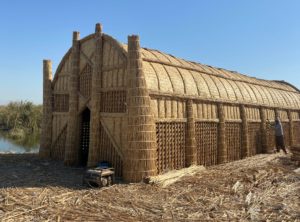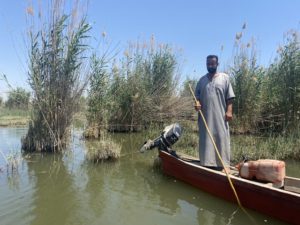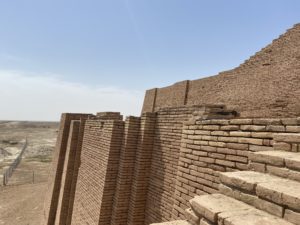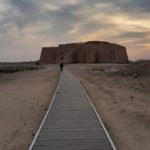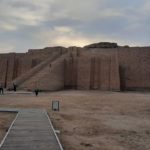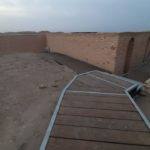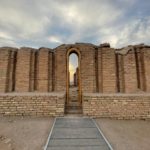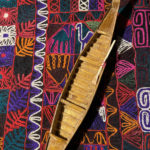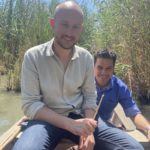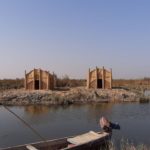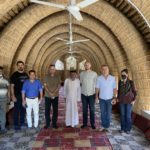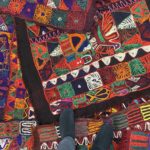The cradle of civilisation: how Un Ponte Per is protecting Mesopotamia’s heritage
A treasure lies in the desert between the Mediterranean and the Persian Gulf; a true gift to humanity, which has withstood the passage of millennia, peoples, raids and wars. A place worthy of discovery for its environment and history.
This is the cradle of human civilisation and indeed of its mystery, which has overcome the tyranny of time and the cruelty of mankind. Mesopotamia is an ancient place, perhaps even the most ancient of all: as the famous Italian singer-songwriter Franco Battiato used to sing, we all descend from the Sumerian civilisation. Including a 34-year-old Belgian called Toon who, after completing his university degree in history, moved to Iraq almost 10 years ago so he could dedicate his life and work to the conservation of Iraq’s immense environmental and archeological heritage.
After meeting local activists, he began volunteering with the Iraq Civil Society Solidarity Initiative (ICSSI). He took part in the 2013 Iraq Social Forum in Baghdad, and for the first time visited Ur, the Ziggurats, the house of Abraham and the Mesopotamian marshlands. He was fascinated and fell completely in love with the region. “How did this wonderful place manage to survive wars, bombing raids, and chemical attacks?” he wondered and is still wondering today. And, considering this country’s history, it really is a miracle that this region has survived up to the present day. Toon met the Un Ponte Per team in 2014 and has been working with us ever since.
“Since then I have focused on working with Iraqi Civil Society, collaborating with the ‘Save the Tigris’ network of women and men Mesopotamian environmental activists who strive every day to save this great river from its inevitable death.”
Last year Toon became coordinator for Un Ponte Per’s “Sumereen” project, which is co-funded by UNDP and the European Union; the goal of the project is to promote ecotourism as a way of safeguarding the ancient Sumerian archeological sites and the wetlands of the Iraqi Marshlands.
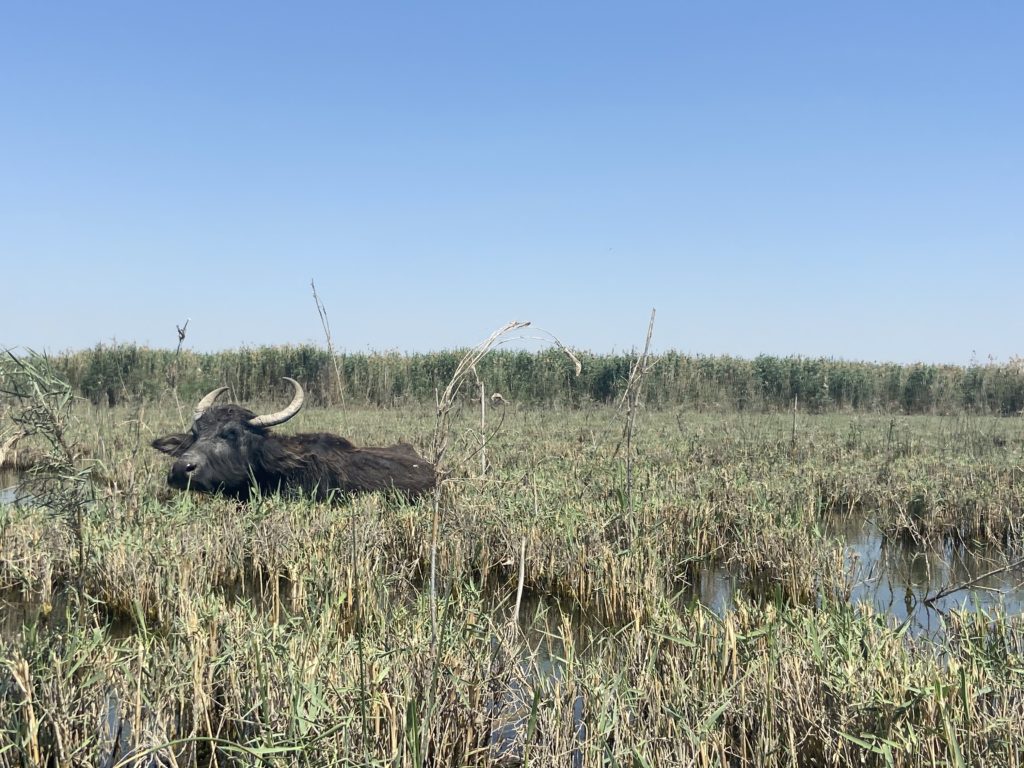
Wetlands beside the desert: water buffaloes wallow in the cloudy water like hippopotami in the area between the two great rivers. “I find it incredible that these marshlands were only declared a UNESCO world heritage site in 2016. This is a wetland paradise, with a unique culture and way of life, including ancient Sumerian traditions. That’s around 5000 0r 6000 years of history,” explains our coordinator.
The men and women who inhabit these marshes, live and work in entirely sustainable symbiosis with their environment, seemingly untouched by the passing of time or events. They depend on the marshes for food and their other resources and keep the ecosystem perfectly balanced at all times. Perhaps that is the secret of their survival; marsh-dwellers’ culture is in complete harmony with their environment. And that is exactly what we want to conserve. We hope that the elders will pass down their traditional crafts to the younger generations. Because tragically the survival of this remarkable ecosystem is now under threat because of the tragic events suffered by Iraq over the past 40 years.
“Our Sumereen project is designed to help conserve the Mesopotamian heritage, through the development of a whole ecovillage in the Hammar marshes, using traditional methods and ecologically-sound material – the first of its kind in Iraq. We are also working on developing and conserving Ur’s archeological sites, by introducing sustainable tourism,” explains Toon. Ur’s Grand Ziggurat, which we all saw pictures of at primary school, still stands tall after 4 millennia, and can now be admired without any risk of damage to the surrounding area, thanks to a network of walkways which protect the ground; the walkways used by Pope Francis when he visited Iraq in March 2021 were provided by the Sumereen project.
Another project goal is the conservation and development of traditional crafts through training sessions for the next generation on building boats to cross the marshes, and techniques to make houses and carpets entirely from the reeds provided by the natural world, as well as delicious sweets made with dates. “Our goal is not mainstream tourism, that’s not what we are interested in,” Toon continues. “These heritage sites are fragile, so we must limit the flow of visitors. That’s what we mean by ecotourism.”
As well as heritage conservation, this project is also designed to support young Iraqi men and women with the creation of a local circular economy. As our coordinator explained “ Job creation for young Iraqis is vital at the moment, as unemployment rates in Iraq among young people are extremely high. But we want to create employment opportunities in perfect harmony with the conservation of the country’s natural and cultural heritage.” Principles of ecology and environmental sustainability have been considered as obstacles to economic development and job creation for too long – and not only in Iraq. Fortunately there are growing numbers of young Iraqi women and men who are interested in environmental justice and sustainability, as seen by the large network of young women and men who support the Save the Tigris and Humat Dijlah campaigns, which have been leading the way on environmental issues throughout Iraq for years.
“This shows that the time is right to facilitate development based on principles of sustainability. Local organisations like Humat Dijlah have a vital role to play in protecting Iraq’s water resources. And it will be those same activists who can begin cooperation with – and monitoring of – local authorities, to ensure that local legislation is respected, through regular checking of the state of the rivers and wetlands.”
Despite the fact that the Mesopotamian heritage is known around the world, many of its many sites have not been open for a long time. Even Iraqis could not visit for many years. This was unacceptable, given the importance of Sumerian culture to humanity, but “perhaps the world is finally ready to learn about it” – Toon says proudly – “we are already seeing more regional and international tourists coming to Iraq every day.”
Finally, after many years, groups of tourists are visiting Ur every day. And visitor numbers are increasing. Many of these visitors want to buy marshland souvenirs including carpets, model boats, woven reed baskets, dates and other objects, but nonetheless, “I want to underline that we are not interested in creating ‘resort tourism’ or working with multinationals or high-level financial groups. Our goal is to welcome enough tourists to finance the conservation of the sites with some income generation opportunities for the local hosting community,” our Coordinator explains.
The ecovillage will be an entirely eco-sustainable model village on the marshes, built and managed by the indigenous community, surrounded only by water, reeds and buffaloes.
“I come to the Mesopotamian marshes when I need peace and quiet, away from the hustle and bustle of city life, where time flows in a different way. Where life has remained more or less the same for millennia,” Toon remarks.
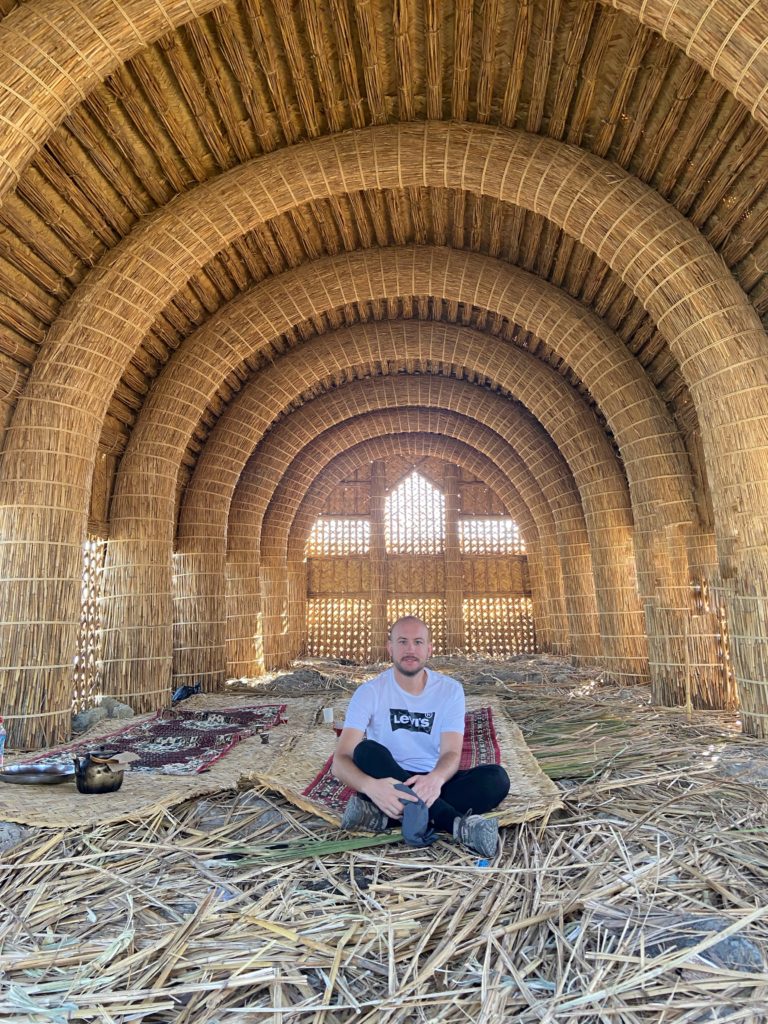
Toon inside one of the Marshland Eco-village houses

